1993, Castle Books, Memphis TN, 267 pages
Twenty years ago my sister was given an autographed book by a patient whose doctor’s appointments she scheduled at a medical center. The book was signed by the author and given to me. I have since read it three times, the last reading being on Memorial Day. This past holiday I read Warriors Who Ride the Wind in an attempt to scrub the emasculating goo from my mind deposited by a reading of an ESPN article about Floyd Money, the man who killed boxing.
The tone of the book starts out heroic, with this quote from a monument erected by the Chinese people of Chanyun China, in honor of one of the author’s fellow flyers:
“As prophesized by the ancient, battles will be fought in the air by warriors who ride the wind.”
The tiger was, to the Orient, what the lion was to the Occident, a symbol of masculine virtue and courage. A letter written by Doctor Chi-Yuan Tung indicates the traditional depths of Chinese appreciation for members of the warrior class, which they felt were personified in a pure form by young American men volunteering as members of the Flying Tigers to defend them against a seemingly unstoppable enemy. This masculine ethos extended, until very recently, across vast cultural boundaries:
“The 110,000 inhabitants of Chanyun all cherish an affectionate remembrance of this young American lieutenant because of his courageous deed. Our school boys love him so much that they dress as pilots and call themselves ‘Air Lieutenant Mooney.’ In the schools the children have plays describing how he gave his life to save the lives of Chanyun’s people. Each of them wants to act the role of Lieutenant Mooney.”
Band does not flinch from describing the filthy carnage he eagerly inflicted upon Japanese ground forces with the six .50 caliber machine guns mounted on his P-40 Mustang. The book is simply marvelous, beginning with his being shot down by a Japanese pilot, and then almost killed by Chinese peasants who mistook him for a Japanese flyer due to the oil that covered him and their inability to read his rescue patch. Once the school teacher showed up and declared him an ally, and the one villager with the ancient community gun, who was about to shoot him, insisted that he still needed to be executed, Band decked him with a left hook to the applause of the villagers.
The accounts of air-to-air and air-to-ground combat are harrowing, as are the accounts of incarceration by the Japanese. The author mentions Chinese courage and valor on many occasions, as they faced an ancient style imperial army bent on national enslavement, implemented by individual soldiers with a perverse drive to genocide.
Two things about Warriors Who Ride the Wind that have struck me harder this time than the first time I read it, was the fact that the U.S. had volunteer units in China fighting the Japanese months before Pearl Harbor, and despite this, the ignorant American population was still surprised that the Japanese attacked the U.S.!
The second item is far more positive. In an age of mass industrial warfare that amounted to—in human terms—the use of lives as the grease to lubricate the gears of one economic machine as it grinds the other economic machine into rust, there was still a place for warriors on an institutional level. Through most of the WWII military experience men might only be warriors in the breech, in that instant when a man might once again make a difference as a whole person rather than as a mere expendable munition.
Far beyond being of interest to the WWII buff, Warriors Who Ride the Wind is an enlightening experience for any reader interested in the warrior ethos that was a constant through most of human history, and is now seen as a behavioral aberration to be cured by the mothering hand of society.



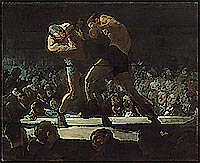
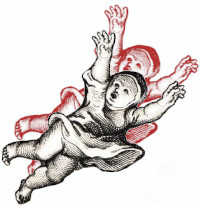

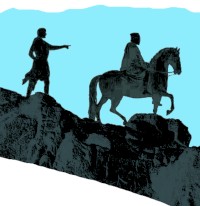

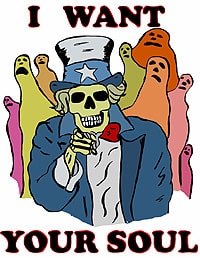
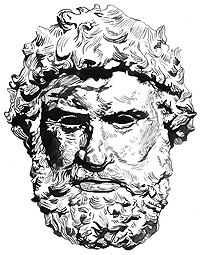

James,
What years are covered by the air actions described in this book? Was this the AVG group or something later? It sounds terrific and I will try to find it, being soft on this stuff.
Riley
The author was not deployed until 42. However, he flew with many men who fought in 41, and does cover the ugly transition from Chenault's to Stillwell's command.
Mr. L:
The AVG (American Volunteer Group) popularly Flying Tigers were in training in late 1941. Then president Roosevelt agreed to help China by signing a presidential order (the kind that is secret) allowing China to recruit serving members of the air units of the Army, Navy, and Marines. People like Boyington, Older, Olson, who were probably bored with peacetime military service, and there were $$$ inducements for shooting down enemy planes.
They used the Curtiss P-40B Tomahawk, that were going to the British, who gave them up. 2 .50s firing thru the prop, 4 X .30s in the wings.
The Mustang came much later, in 1944, long after the AVG was gone.
They actually saw combat after Pearl Harbor, contrary to popular belief.
Later in 1942, they were given the choice of either joining the USAAAF in theatre, or returning to the US and rejoining their original branches. The attitude of the "regulars" PO'd a lot of them, and they decamped.
The ones who stayed became the basis for the 14th A.F., with Chennault in command. He and Joe Stilwell did not get along, and Chaing REALLY did not like ol' Vinegar Joe.
The CBI was always a neglected theatre, operating on a shoestring.
I believe the latest view of the CBI is that it was kinda a waste, but they did keep the Japanese from taking India, like they did Burma.
There are all sorts of books on the AVG, my favorites being Scotts God is my Copilot, Tuchmans Stillwell and the American Experience in China, and the series I can't afford, British, called (appropriately) Bloody Shambles. Olga Greenlaws book Lady and the Tigers (she and Boyington were (ahem) friends)
All very Terry and the Pirates, if you remember that comic strip.
Way of the Fighter is about Chennault, who had an interesting life, to say the least. He formed the outfit, for Chaing.
That should do for a start, depending on availability.
I'm an air guy and a history guy, thus the sermon.
Thank you Bernie, I really appreciate the information and find it fascinating.
The author of this book seemed to think highly of Chennault, and he was no Francophile, and expressed a sharp dislike for one French officer.
If you would ever be interested in writing an article on this subject and having it posted on this site, just send it to me as a word file at ϳаmeslаfond.com at gmаil.com.